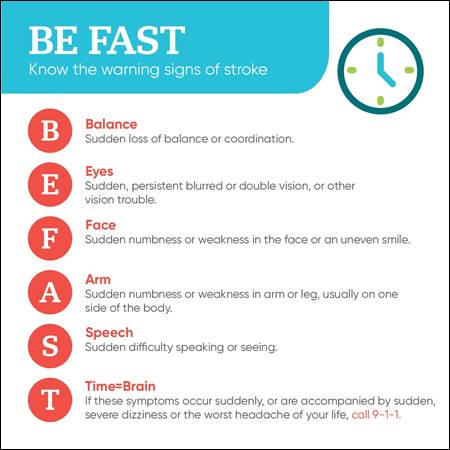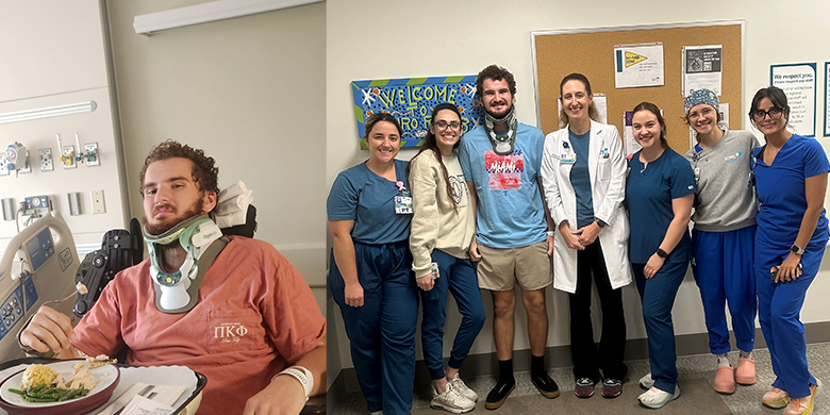Stroke is no joke: Know the signs and how to prevent a stroke
- Category: Stroke
- Posted on:

May is Stroke Awareness Month, so LCMC Health is sharing information about stroke warning signs, risk factors, and prevention all month long.
Did you know that strokes are a leading cause of death in the United States? And that women are more likely to die from a stroke than breast cancer? Strokes cause more serious long-term disabilities than any other disease—affecting all ages, genders, and ethnicities.
These stats are scary to hear, but that’s why it’s so important to learn about strokes and what puts you at risk for stroke. Let’s dig in to what you need to know about strokes.
What causes strokes?
A stroke is a “brain attack” that happens when blood flow to the brain stops—either from a blockage or bleeding. Our brains require a constant supply of blood to function properly. Any disruption to blood flow can cause serious problems.
When the brain doesn’t get the blood it needs, brain cells begin to die quickly. Unfortunately, it’s as serious as it sounds and a true medical emergency. A fast response to a stroke can mean the difference between life or death and minimize long-term effects.
Ischemic vs. hemorrhagic stroke: What’s the difference?
There are two different types of strokes:
- Ischemic stroke: Blocked blood flow to the brain because of a clot or plaque.
- Hemorrhagic stroke: Bleeding in or around the brain because of uncontrolled elevated blood pressure, a ruptured aneurysm, or arterial-venous malformation.
Ischemic strokes are more common, accounting for 87% of all stroke cases.
You may also experience a transient ischemic attack (TIA), also known as a warning stroke. It causes similar stroke symptoms, because blood can’t reach the brain for a short time, but without permanent brain damage. Call 911 if you experience a TIA, even if symptoms seem to resolve.
BE FAST stroke signs
Every minute you are having a stroke, you lose about two million brain cells. The longer you take to get medical attention, the more brain cells you lose. That’s why it’s important to know stroke signs and symptoms. As soon as you suspect that someone is having a stroke, call 911.
Remember BE FAST, the acronym for stroke symptoms: balance, eyes, face, arm, speech, time=brain.

Stroke treatment and impacts
After a stroke, people can face a range of emotional and physical complications and changes, including:
- Chronic fatigue
- Difficulty moving certain parts of the body
- Depression and mental health challenges
- Issues with sleeping
- Loss of bladder or bowel control
- Memory and thinking problems
- Pain
- Seizures
- Vision problems
Fast stroke treatment and rehabilitation give you the best chance at a full recovery. Treatment is all about getting blood back to the brain and retraining the brain.
Biggest risk factors for stroke
Anyone can have a stroke at any age, but your chance of having a stroke increases if you have certain risk factors. You can change or manage some risk factors for a stroke, while others are out of your control. It helps to be aware of both.
Stroke risk factors we can’t change include:
- Age: People age 55 and older
- Family history of stroke
- Previous TIA or stroke
- Race: African Americans
- Sex: Females
Stroke risk factors we can modify:
- Alcohol: Avoid having more than two drinks a day
- Diabetes
- Heart-related conditions:
- Atrial fibrillation (irregular heartbeat)
- High blood pressure
- High cholesterol
- Illegal drug use
- Lack of exercise
- Obesity
- Poor nutrition, especially diets high in fat and salt
- Sleep apnea
- Smoking or tobacco
Expert New Orleans stroke care
Simply managing your risk factors can reduce your risk of stroke by up to 80%! Keep regular appointments with your primary care provider. If you do not have one, LCMC Health is here to help; you can schedule an appointment here. Additionally, our team of stroke experts not only provides stroke treatment and recovery services but also helps you avoid strokes in the first place.
Learn about stroke services near you. And make sure you know how to tell when someone is having a stroke—it may just save a life.
